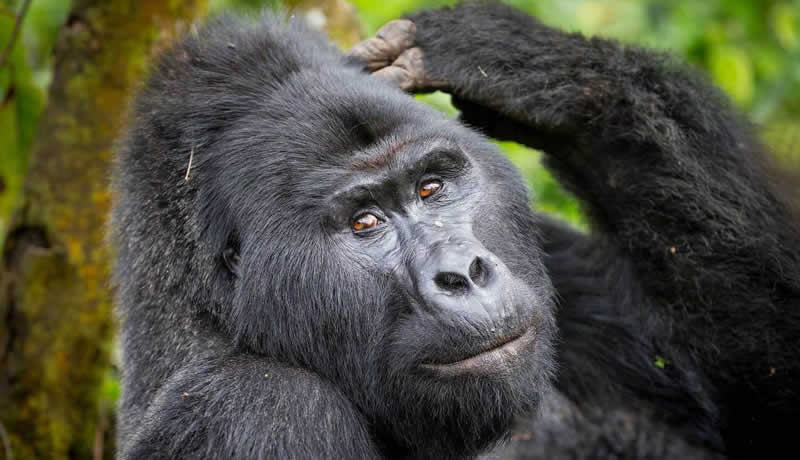One of the most revered attractions in Africa, especially in east and central Africa, is the critically endangered mountain gorilla. In fact, these iconic apes are ranked among the top three attractions preferred by tourists visiting Africa.
Mountain gorillas reside in only two locations in the world: Uganda’s Bwindi Impenetrable Forest and the Virunga massif — a chain of eight volcanic mountains that straddle Rwanda, DR Congo and Uganda.
The 2010 census put the total number of the world’s remaining mountain gorillas at 880, with 400 of them living separately in Uganda’s Bwindi Impenetrable Forest.
Results from the most recent mountain gorilla census, which was carried out in April 2016, are expected to be released mid this year. And even though the results are expected to indicate a spike in mountain gorilla numbers, our closest cousins still feature prominently on the International Union for Conservation of Nature’s red list of critically endangered species.
Origin
Mountain gorillas are one of the largest primates and have a genealogy that has been traced back to the Proconsul Africanus apes that are believed to have lived in the volcanic mountains of East Africa nine millions years ago. The species gorilla gorilla was fully classified in 2003 by the World Conservation Union into two subspecies: gorilla gorilla and gorilla beringei, which encompasses both those found in Virunga and those found around Mgahinga and Bwindi.
Gorillas are believed to have originated from their lowland relatives about 400,000 years ago and migrated into the surrounding mountains. Over the years they have grown and adapted to their current homes.
Appearance
The mountain gorilla is considered a little different from the other gorillas mostly due to its physical appearance and characteristics.
They are massive in size and can stand up to five feet tall. Most of the males are estimated to weigh 200 Kgs and the females at least 100 Kgs. The males are usually twice the size of the females, which helps them to be easily dominating over others.
Gorillas have short thick trunks, broad chests and shoulders. Their ears and eyes are small and a characterised by large hairless heads.
Older males usually have silver hairs on their necks and backs, hence the name silverbacks. They have long arms with short stubby legs.
Behaviour
Although at first glance you will see a scary big gorilla, especially when they stand to their full height, these creatures are not what we all think them to be. On the contrary, gorillas are shy and tend to keep away from other animals.
They live in family units to which they have strong attachments for most of their lives. The units can consist of up to 30 members: one silverback and many females and little ones.
When it comes to leadership, gorillas have a hierarchy they follow that helps keep peace in their units.
They are docile till one proves to be a threat to them or their units and that’s when they become territorial.
Silverbacks are the main defenders of the family units that they live in.
Gorillas are diurnal animals that are active from 6am to 6pm, spending the day foraging for food and sleeping. They take care of their young till they are old enough to fend for themselves when they are weaned off suckling.
Habitat
Mountain gorillas, as their name suggests, often live in high altitude areas such as mountains and hills although there is the case of those that live in the Bwindi Impenetrable Forest, which are argued by primatologists to be different from the rest.
Gorillas are nomadic in nature and tend to build their nests almost daily, although they remain in the vicinity of their territory without wandering off.
The young ones live with the females while the adult males make their own nests. Over the years, habitats for gorillas up in the hills and mountains have been encroached on by farmers, which has contributed greatly to the drop in their numbers.
Diet
Gorillas are vegetarian and feed on fruit, bamboo shoots and leaves, among an array of plants available in their habitats. They are large animals so they need to eat a lot for strength which they do almost all through the day. However, they are not known to not drink water that much.
How to see them
The Uganda Wildlife Authority and Uganda Tourism Board usually organise gorilla trekking trips annually. If you want to do it with friends, you can get a permit or do everything through a tour agent to make everything easier for you. It is advisable to do the trekking when the season is not too wet to make movement hard.
Gorillas are a valued attraction in Uganda and albeit being hunted by poachers or attacked by other wild animals, they have increased in number due to efforts by the concerned bodies to protect them and improve their breeding habits.
In Rwanda, it’s the Rwanda Development Board that is in charge of selling gorilla trekking permits.
